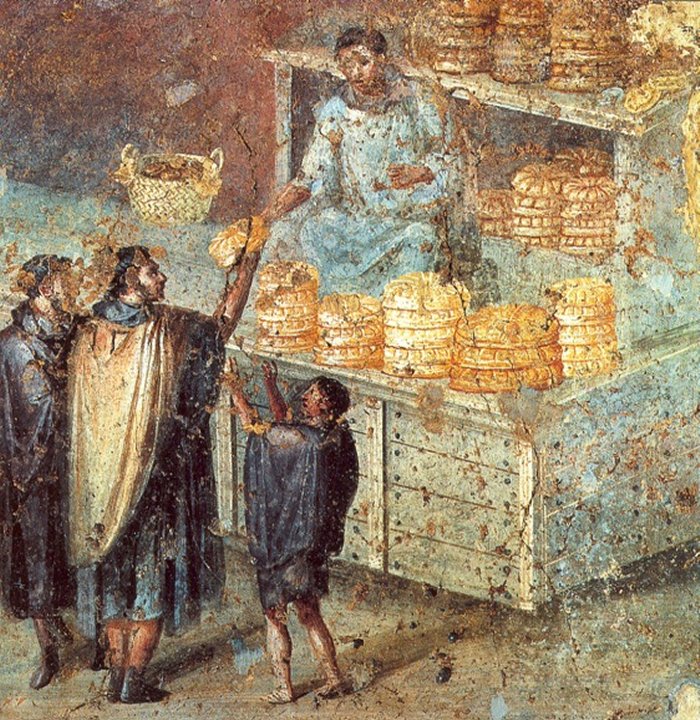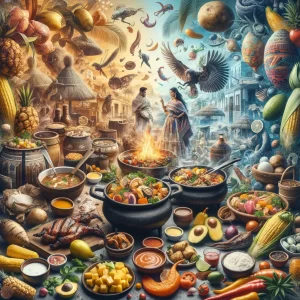Bread has long been a fundamental component of human sustenance, significantly influencing diets and cultures worldwide.
This article examines the history of bread-making, tracing its origins in ancient civilizations and the development of techniques that transformed basic grains into valued staples. It delves into the rituals and beliefs that accompany this time-honored practice, emphasizing its religious significance and social customs.
Furthermore, the article explores the various methods of bread-making, from Egypt to China, and highlights the tools that have facilitated this essential craft.
The History of Bread-Making
.jpg_00.jpeg)
The history of bread-making constitutes a rich narrative that spans thousands of years, originating in ancient civilizations where it served as a fundamental component of sustenance and reflected cultural significance.
From the earliest forms of flatbreads produced by grinding grains such as wheat, barley, and rye, to the more intricate processes involving fermentation and leavening, bread has evolved into a staple food that embodies the agricultural practices and food cultures of societies worldwide.
The development of various baking techniques and the communal meals associated with bread-making rituals underscore its role not only in providing nourishment but also in fostering community bonding and reinforcing identity.
Origins of Bread-Making in Ancient Civilizations
The origins of bread-making can be traced back to ancient civilizations, where early agricultural practices allowed communities to cultivate grains such as wheat, barley, and rye. This development laid the groundwork for bread’s emergence as a dietary staple.
Among these civilizations, the Egyptians exhibited exceptional craftsmanship in their baking techniques, employing distinct fermentation methods and stone-ground flour that highlighted the intricate flavors and textures of their bread. Their historical recipes, which included both leavened and unleavened varieties, serve as a testament to their advanced approach to the art of baking.
Simultaneously, the Mesopotamians made significant contributions to this evolution by introducing wood-fired ovens, which improved baking efficiency and produced bread with appealing crusts.
As societies transitioned from hunter-gatherer lifestyles to agrarian-based living, bread evolved into more than just sustenance; it became a crucial element of social and ritual practices, reflecting the profound cultural significance it held within these early civilizations.
Evolution of Bread-Making Techniques
The evolution of bread-making techniques exemplifies the advancements in culinary practices, highlighting methods such as fermentation, kneading, and the development of leavening agents that have transformed bread into a diverse array of flavors and textures.
In ancient times, early bakers employed natural fermentation processes to produce leavened bread, a practice that established the foundation for future innovations. As cultures developed, so too did the tools and techniques of bread-making, leading to the introduction of yeast and sourdough starters, which significantly enhanced the flavor and texture of bread.
Over the centuries, the simple combination of flour and water has evolved into a complex craft, with modern bakers experimenting with whole grains, seeds, and alternative leavening methods. This ongoing exploration not only honors traditional practices but also accommodates contemporary tastes, rendering bread a versatile staple in cuisines across the globe.
Bread as a Staple Food in Ancient Civilizations
In ancient civilizations, bread transcended its role as a mere food item to become a staple that provided essential nourishment and held significant cultural importance in communal meals across various societies.
It constituted the foundation of diets, energizing families and communities while fostering unity among individuals during shared meals that celebrated both life’s milestones and everyday gatherings. Bread symbolized abundance, often serving as a central element in numerous rituals, ranging from harvest festivals to sacred ceremonies, thereby reinforcing its status as a marker of cultural identity.
Communities frequently incorporated bread into sacred practices, perceiving it as a vessel of blessings that connected them to their ancestors.
Consequently, bread emerged as more than a source of sustenance; it represented a crucial link to heritage and the social fabric that bound individuals together.
Rituals and Beliefs Surrounding Bread-Making
Rituals and beliefs associated with bread-making are deeply embedded in various cultures, where bread is frequently endowed with symbolism and spiritual significance.
It is commonly utilized in religious ceremonies and offered to deities, thereby highlighting its fundamental role in the human experience.
Religious Significance of Bread-Making
Bread has historically held profound religious significance, often serving as an offering to deities and representing spiritual nourishment across various belief systems.
In Christianity, for example, the ritual of communion exemplifies the sacred nature of bread, symbolizing the body of Christ and fostering a deep sense of connection among believers. Similarly, in Judaism, challah is braided and blessed during Shabbat, embodying both the joy of community and the sanctity of rest. In Hinduism, specific types of bread are offered to gods during puja ceremonies, acting not only as sustenance but also as a means of seeking blessings.
Bread also features prominently in myths across cultures, such as the story of Demeter and Persephone in Greek mythology, where it signifies abundance and the cyclical nature of life and death.
The multifaceted presence of bread within these faiths underscores its role as not merely a form of physical sustenance but also as a symbol of divine connection and spiritual fulfillment.
Social and Cultural Customs of Bread-Making
.jpg_01.jpeg)
Social and cultural customs surrounding bread-making exhibit considerable diversity, with traditions such as communal baking and the practice of giving bread as a gift reflecting a profound sense of community and shared heritage.
These practices not only celebrate the art of baking but also serve to strengthen interpersonal relationships among individuals. For instance, in numerous cultures, the act of sharing freshly baked bread during community gatherings symbolizes trust and unity, thereby fostering a spirit of inclusiveness.
Rituals involving bread frequently commemorate significant life events, such as weddings and religious ceremonies, reinforcing cultural identities while transmitting cherished recipes and narratives.
The act of sharing bread transcends mere sustenance; it functions as a cultural bridge, connecting generations and reminding individuals of their collective history and values.
Bread-Making Techniques in Different Ancient Civilizations
The techniques of bread-making exhibited considerable variation among different ancient civilizations, each cultivating distinctive methods that mirrored their cultural practices and available resources.
This diversity ranges from the bread-making techniques of the Egyptians to the bread culture of the Romans and the bread rituals of the Greeks.
Egyptian Bread-Making Techniques
Egyptian bread-making techniques were distinguished by the utilization of ancient tools, including stone mills for grinding grains and specialized bread ovens, which played a crucial role in the fermentation process.
These methods not only facilitated the production of various types of bread, ranging from coarse, flat loaves to more refined varieties used in sacred rituals, but also reflected the Egyptians’ profound appreciation for this staple food. The grinding of wheat or barley into flour, often accomplished using a mortar and pestle, was a meticulous task that demanded skill and precision.
Once the dough was adequately prepared, it was placed in the hot, earthen ovens, where the distinctive aroma of baking bread permeated the households. Bread served not merely as sustenance but also as a symbol of life and prosperity, integral to both daily meals and religious offerings, thereby signifying the intricate connection between nourishment and spirituality in ancient Egyptian culture.
Greek Bread-Making Techniques
Greek bread-making techniques encompass the utilization of sourdough starters and sophisticated kneading methods, underscored by rituals that accompany the baking process, often characterized by communal participation.
These practices are deeply entrenched in tradition, reflecting the close-knit nature of Greek communities, where the act of sharing food is synonymous with expressing love and hospitality.
The process of bread-making transcends mere culinary preparation; it evolves into a celebration of unity and heritage. Families congregate around wooden tables, utilizing simple tools such as dough scrapers and rolling pins, with each individual contributing to the creation of this essential food item.
The enticing aroma of baking bread permeates the air, signifying not only the completion of a cherished dish but also the reinforcement of familial bonds and a manifestation of cultural identity.
Roman Bread-Making Techniques
Roman bread-making techniques were notably advanced for their time, demonstrating a variety of bread types and the expertise of artisan bakers, who played a pivotal role in the culinary traditions of Roman society.
As ancient civilizations expanded trade routes, the introduction of new grains like wheat and barley enabled bakers in Roman communities to explore a wide range of flavors and textures, resulting in innovations such as the incorporation of sourdough and yeast fermentation. These advancements were shared through cultural exchange and had a significant impact on food history.
These advancements not only improved the nutritional quality of bread but also enhanced its status as a staple food within daily diets. Social norms regarding bread consumption began to take shape, with distinct types of bread symbolizing different social classes; for example, the affluent often consumed finer, white loaves made from highly refined flour, while the lower classes relied on coarser, darker breads. Bread also played a role in religious ceremonies and was seen as a symbol of sustenance and abundance.
Over time, these baking practices reflected the complex relationship between food, culture, and socio-economic structures in Roman life. This was evident in the communal baking practices and food rituals that were integral to community life, highlighting the cultural significance of bread-making.
Chinese Bread-Making Techniques
Chinese bread-making encompasses a diverse array of culinary traditions, with particular emphasis on the production of steamed buns and various regional variations that showcase the range of ingredients, such as rice flour and wheat, and techniques utilized throughout China. These culinary traditions are steeped in history and reflect the agricultural practices of different regions.
These bread products, including mantou, baozi, and the unleavened flatbreads of Northern China, represent the unique narratives of local customs and agricultural practices. The incorporation of local ingredients—ranging from rice flour in the southern regions to wheat in the northern areas—plays a crucial role in determining the texture and flavor profile of the bread.
The fermentation process can vary considerably by region, resulting in distinct tastes and aromas that cater to local preferences. This rich diversity of breads not only reflects the geographic variety of the country but also emphasizes the significance of bread in daily life, social gatherings, and cultural celebrations, symbolizing nourishment and prosperity.
Mayan Bread-Making Techniques
.jpg_10.jpeg)
Mayan bread-making predominantly utilized corn, resulting in traditional foods such as corn tortillas, which reflect the ancient grains and culinary methods that are integral to Mayan culture. This process highlights the agrarian societies of the time and the significance of maize in their daily life and spiritual practices.
Corn, regarded as a sacred staple, has served as the foundation of the Mayan diet for centuries. Its importance extends beyond mere sustenance; it is intricately linked to rituals, agricultural practices, and community life. Corn’s role in rites of passage and festivals underscores its cultural significance.
Over generations, traditional techniques, such as nixtamalization—where corn is soaked and cooked in an alkaline solution—have been diligently preserved, enhancing both flavor and nutritional value. These techniques, rooted in ancient societies, demonstrate the craftsmanship and culinary heritage of the Mayan people. Although modern innovations have introduced variations, many communities remain committed to these time-honored practices.
The preparation of corn tortillas, often crafted by hand using stone tools, not only sustains cultural heritage but also strengthens social bonds, serving as both a meal and a means of connection among families and friends. This communal activity is a testament to the enduring traditions and food anthropology of the region.
Tools and Equipment Used for Bread-Making in Ancient Civilizations
The tools and equipment employed in bread-making by ancient civilizations were crucial for converting raw ingredients into the diverse varieties of bread that sustained communities across different cultures. These tools, such as kneading implements and fermentation vessels, were vital for the innovations in baking techniques seen throughout history.
These included specialized implements such as:
- bread ovens
- stone mills
- baking stones
Bread Ovens and Mills
Bread ovens and stone mills were essential tools in the bread-making process, enabling ancient civilizations to grind grains and bake bread with remarkable efficiency. These tools were central to the culinary traditions of regions like Mesopotamia and Egypt, where milling and hearth baking were refined into art.
These fundamental devices transformed the manner in which communities produced one of humanity’s staple foods. The design of stone mills streamlined the process of converting hard grains into fine flour, significantly influencing both the texture and flavor of the bread. Concurrently, the capability to preheat and maintain consistent temperatures in bread ovens ensured that loaves were cooked evenly, resulting in a pleasing crust and a soft interior. Such advancements in baking methods were critical to food production and food preservation in historical contexts.
Collectively, these innovations not only enhanced the quality of bread but also reduced production time, allowing societies to sustain larger populations, thereby supporting growth and trade. This ultimately played a pivotal role in shaping their social and economic structures.
Bread Molds and Stamps
Bread molds and stamps were employed in ancient bread-making practices, enabling artisans to create distinctive shapes and designs that reflected local traditions and cultural preferences. These practices were often linked with rituals of abundance and the symbolism of bread in mythology and art.
These techniques were not solely aesthetic; they also served important practical functions, such as helping with the differentiation of various types of bread, which often carried significant cultural connotations. For example, in certain European communities, unique bread stamps were utilized during celebrations to signify regional identity and social status. These stamps also acted as a form of bread-related festivals, linking the act of baking with cultural and spiritual practices.
The artistry involved in decorating loaves with molds or stamps can be observed in various cultures, from the intricate patterns found in Italian pane carasau to the straightforward yet effective designs of North African flatbreads.
This rich tradition underscores the expertise of bakers, who skillfully blend artisan methods with practical considerations, thereby showcasing an impressive array of bread styles and flavors. The craftsmanship involved is a testament to the historical significance and preservation of traditions associated with bread-making.
Specialized Tools for Different Types of Bread
Specialized tools were developed to address the diverse types of bread produced in ancient civilizations, highlighting the rich culinary traditions and baking techniques that have evolved over time. These tools were integral in sustaining the economic significance of bread as dietary staples and as a form of social and cultural exchange.
These innovations not only demonstrate the necessity of efficient baking but also underscore the cultural significance that bread holds across various societies. For example, the use of a French baguette mold enables bakers to achieve the iconic shape and crisp crust associated with this bread, while traditional Italian ciabatta necessitates specific forms to create its distinctive airy texture.
Additionally, tools such as Dutch ovens and baking stones play a critical role in enhancing heat retention, which ensures even cooking—an essential factor in producing the perfect loaf. These implements exemplify the intricate relationship between technique and tradition, showcasing how each culture imparts its identity into the bread-making process.
Frequently Asked Questions
What role did bread-making play in ancient civilizations?
.jpg_11.jpeg)
Bread-making was a crucial part of daily life in ancient civilizations. It provided sustenance and was often seen as a symbol of wealth and prosperity. Additionally, bread was often used in religious rituals and ceremonies, acting as offerings to deities and symbolizing life and abundance in harvest festivals.
What were the different types of bread made in ancient civilizations?
Ancient civilizations had a variety of breads, such as flatbreads, leavened breads, and sourdough breads. The type of bread made often depended on the region and available ingredients, with grains like wheat, barley, and other grains serving as the foundation for these dietary staples. The inclusion of various leavening agents and baking techniques reflects the diversity of bread types.
Were there any rituals associated with bread-making in ancient civilizations?
Yes, bread-making was often accompanied by rituals and superstitions. For example, in ancient Egypt, the baker would pray to the gods before and during the bread-making process. These rituals were embedded in the belief that bread held symbolic power, often linked to food anthropology and ancient myths surrounding bread in mythology.
How did bread-making techniques evolve in ancient civilizations?
The techniques used for bread-making evolved greatly over time. In ancient Egypt, for example, bread was made by mixing flour and water, while in ancient Rome, bread was made using a sourdough starter. These evolving techniques reflect the historical texts and archaeological findings that showcase the innovation in culinary traditions and food preservation methods over the centuries.
What significance did bread hold in ancient religious ceremonies?
Bread was often considered a sacred food in ancient civilizations. It was used in religious ceremonies and offerings to the gods. In some cultures, bread was believed to have spiritual powers and was used for healing and protection. This symbolism of bread is well-documented in historical significance and food history, highlighting its role in spiritual practices and cultural rites of passage.
Did bread-making have any social or cultural implications in ancient civilizations?
Yes, bread-making was an important social and cultural practice in ancient civilizations. Bread was often used as a way to display wealth and status, and bakers held a high social standing in society. The communal aspect of bread-making fostered community and social gatherings, with bread often acting as a gift and central to domestic life and social consumption practices.

My name is Bruno, I have been a writer for 5 years and I work with website creation. My goal is to provide true information to readers. In fact, on this site I write about cultures and traditions, which I have been passionate about since childhood.




